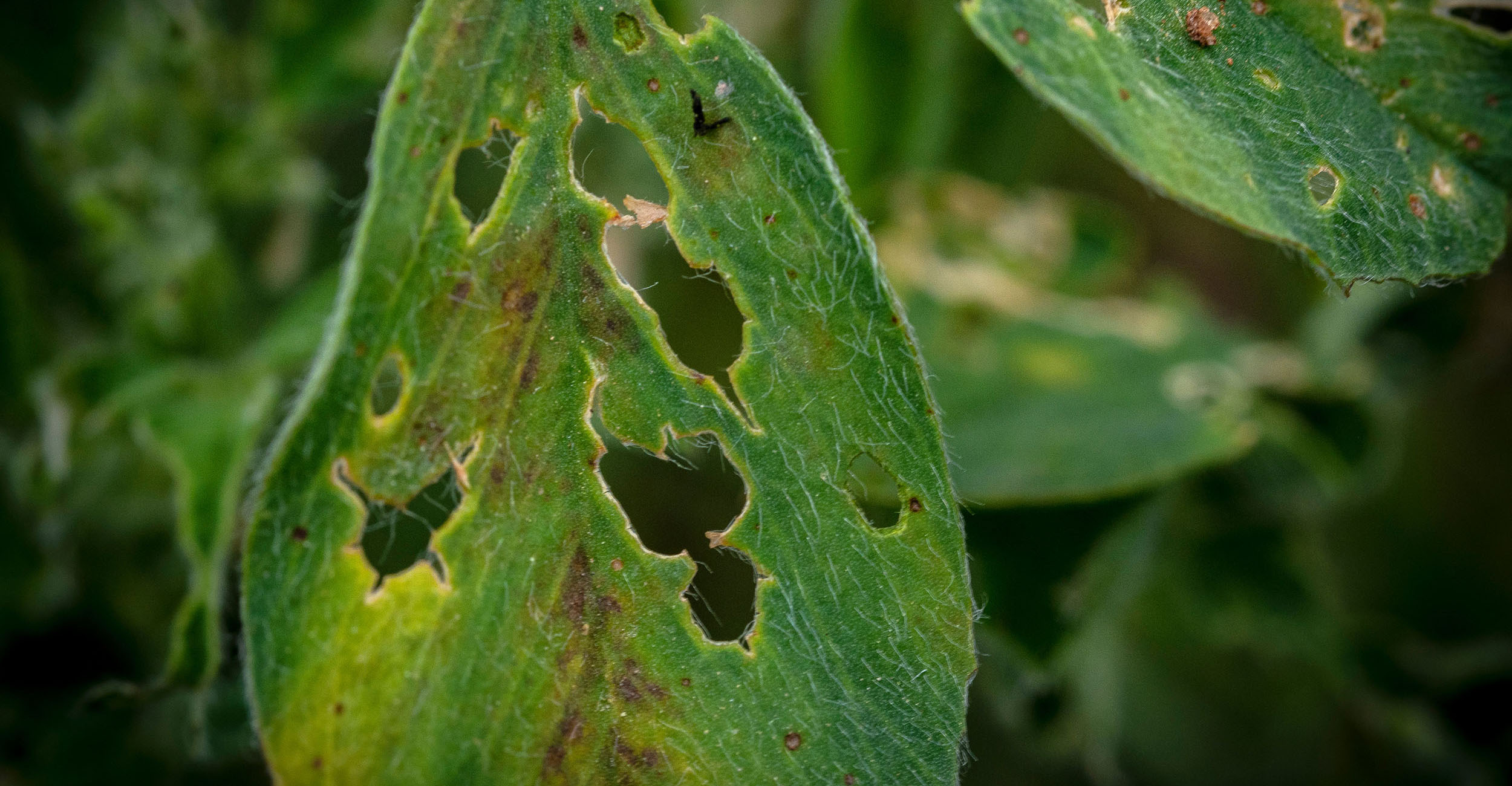
Oklahoma Alfalfa Weevil Insecticide Resistance Study a statewide collaboration
Wednesday, May 19, 2021
Media Contact: Donald Stotts | Agricultural Communications Services | 405-744-4079 | donald.stotts@okstate.edu
The multi-year Oklahoma Alfalfa Weevil Insecticide Resistance Study conducted by Oklahoma State University experts is showing how the dissemination of research-based information is key to maximizing the effectiveness of insecticides vital to agricultural production.
OSU Ag Research has already shown increased cases of alfalfa weevil resistance to pyrethroid insecticides and related products. Such chemicals — in particular, those containing the active ingredient lambda-cyhalothrin — currently provide the cornerstone of weevil management.
“Alfalfa weevils developing resistance to a given pyrethroid runs the risk of developing cross-resistance to all mode-of-action group three insecticides,” said Kelly Seuhs, OSU Extension associate field crops specialist with the university’s Department of Entomology and Plant Pathology. “As resistance develops, this could render our most utilized and economical insecticide class ineffective.”
The Oklahoma Alfalfa Weevil Insecticide Resistance Study is a statewide collaboration working to:
- Identify the level of resistance to pyrethroid and other insecticides in locations where it has established.
- Map the spread of resistance throughout Oklahoma.
- Identify risk factors for the development of insecticide-resistant alfalfa weevil.
- Develop resistance management recommendations for producers to mitigate economic impacts of insecticide resistance.
In addition to field efficacy trials, preliminary bioassays conducted last year provided evidence that at least some resistance to products containing lambda-cyhalothrin is occurring in Oklahoma, Seuhs said.
For the 2021 season, OSU Extension researchers are expanding tests and studying chemistries besides lambda-cyhalothrin to see if resistance is forming to other pyrethroid products. Information from efficacy trials is still being processed.
“The good news is that other group-three pyrethroid products, at this point, are still doing a pretty good job with control,” Seuhs said. “Additional products outside the mode-of-action group three classification are also maintaining effectiveness. Cost per acre will vary with these products. Be aware generic forms of the insecticides may not be available.”
OSU Extension recommendations are to incorporate an integrated resistance management (IRM) program in conjunction with a comprehensive integrated pest management (IPM) approach.
A key element of effective resistance management is the use of insecticide rotations or sequences of different insecticide mode-of-action classes. Insecticides are classified into five groups, based on mode of action: physical poisons, protoplasmic poisons, respiratory poisons, nerve poisons and poisons of a more general nature.
“Continued dependence on insecticides as a control measure for alfalfa weevils will continue to be a key management tool, but insecticide resistance will continue to evolve as well,” Seuhs said. “Utilizing an integrated resistance management plan allows growers to be proactive in delaying and managing resistance.”
Fact sheets detailing research-based information about managing alfalfa weevil resistance to key insecticides are available online through OSU Extension and at OSU Extension county offices.
